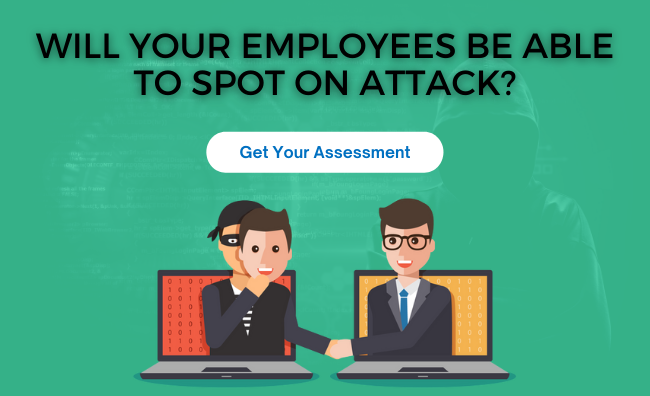%20(27).png?width=655&name=Blog%20ctas%20(bottom)%20(27).png) Social engineering is a cyberattack that manipulates human weaknesses to access protected networks and personal data. Bad actors can initiate it in various ways, including email, SMS, web contact forms, voice calls, and social media. These attackers consider humans the weakest link in an organization's cybersecurity setup.
Social engineering is a cyberattack that manipulates human weaknesses to access protected networks and personal data. Bad actors can initiate it in various ways, including email, SMS, web contact forms, voice calls, and social media. These attackers consider humans the weakest link in an organization's cybersecurity setup.
How Social Engineering Attacks Work
Attackers usually exploit the natural human tendency to trust colleagues, friends, relatives, and other acquaintances. They often employ surprisingly simple techniques to achieve their goals. For example, an employee might receive a legitimate-looking email supposedly from their boss (or IT dept) asking for login credentials.
The hackers will then use these details to access the company's private portal. Some pretend to call from a different branch of the company, requesting help to solve a purported emergency.
Social engineering attackers typically target data they can use for identity theft, including names, credit card numbers, and addresses. Some patiently stalk their victims' social media profiles to understand their mannerisms, favorite locations, and professional history. These details make their act more convincing.
Common Types of Social Engineering Attacks
Phishing is the most popular type of social engineering. It utilizes spoofed emails and links to collect credit card details, login credentials, and other personal data. 'Whaling' is a variation of phishing that targets top business executives and government agents.
In extreme situations, bad actors can physically access a facility to complete an attack. They might pretend to be maintenance crew, parcel delivery drivers, or construction workers. Other social engineering techniques include honey traps, baiting, pretexting, tailgating, SMS phishing, and watering hole attacks.
Signs of Social Engineering Attacks
Even with the most sophisticated cybersecurity systems, your employees might still fall for these deceptions. The best way to avoid social engineering attacks is to train them to identify the signs, which include:
1. Unexpected messages
This sign isn't necessarily proof of an attack because many people receive several unexpected emails daily. Suspicious messages tend to answer sensitive questions that you never asked, such as mortgage financing deals. The intention is to get you interested enough to provide the requested personal details.
2. Unusual urgency
 Most social engineering attacks include stressor events that compel you to act fast to avoid harmful outcomes. A common tactic is to inform you that your online account may be compromised if you don't change your details immediately. This illusion of urgency stops you from seeking professional opinions on the message's legitimacy.
Most social engineering attacks include stressor events that compel you to act fast to avoid harmful outcomes. A common tactic is to inform you that your online account may be compromised if you don't change your details immediately. This illusion of urgency stops you from seeking professional opinions on the message's legitimacy.
3. Peculiar requests
Unusual requests are a clear sign of a potential attack. For instance, customer care representatives rarely need information about the production department. Another red flag is if the questions involve passwords and other credentials that would provide access to sensitive data.
4. Incorrect information
Most attackers probe their victims for information while being vague or evasive about themselves. The details they offer might also sound fake or deliberately misleading. Some attackers request future correspondence through personal emails or numbers instead of official company channels. If the information they provide isn't verifiable, it's advisable to end communication and inform cybersecurity experts.
5. Potentially malicious links and attachments
Malicious links are among the most preferred options for social engineering attackers because they're not always easy to identify. Advanced cybersecurity solutions such as social engineering assessments deal with the problem effectively. This service tests your preparedness in various ways.
They include attempting phishing techniques, dumpster diving, telephone impersonations, and physical intrusions. Apart from improving your alert levels, it prevents costly breaches while boosting customer confidence.
Final Thoughts
At Hummingbird Networks, we offer comprehensive solutions to various IT challenges, including social engineering attacks. Our highly skilled and experienced team keeps up with industry trends to give our clients the most effective services. Apart from social engineering analysis, they include security, IT infrastructure, penetration, and web application vulnerability assessments. Contact us today for more in-depth solutions.





.png?height=1080&width=1080)







